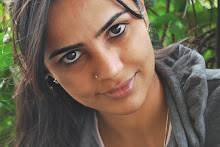 Framing the title for group exhibition always attempts towards assuming a deliberate and thoughtful position while asserting a defined rubric, under whose realm
Framing the title for group exhibition always attempts towards assuming a deliberate and thoughtful position while asserting a defined rubric, under whose realm  the flow of distinctive creative capillaries get channelized in a common duct. A/P is a matter of such gesticulation where these seven printmakers, products of graphics department of Faculty of Fine Arts intend to seek a common exhibiting space. A/P stands as a universally accepted terminological initial in the discipline of graphic arts. The word form A/P means ‘Artist Proof’ which is the first early proof impression of an engraving, or the like, often distinguished by the artist's signature. The first print pulled off a fresh "stone" (the plate which was drawn or etched by the artist to create the prints) accords to itself an exclusive aura, in effect to the fact that the stone would wear down as the number of prints increase, and A/P would be the sharpest of the lot and thus hold an indexical value for the subsequent editions that follow.
the flow of distinctive creative capillaries get channelized in a common duct. A/P is a matter of such gesticulation where these seven printmakers, products of graphics department of Faculty of Fine Arts intend to seek a common exhibiting space. A/P stands as a universally accepted terminological initial in the discipline of graphic arts. The word form A/P means ‘Artist Proof’ which is the first early proof impression of an engraving, or the like, often distinguished by the artist's signature. The first print pulled off a fresh "stone" (the plate which was drawn or etched by the artist to create the prints) accords to itself an exclusive aura, in effect to the fact that the stone would wear down as the number of prints increase, and A/P would be the sharpest of the lot and thus hold an indexical value for the subsequent editions that follow.It is of a crucial interest here that this technical nomenclature A/P does not problematize the collective categorization of the works exhibited, which is confined not only to prints but also include drawings by several of them. While Dimpal Panchal, Durgaprasad Bandi and Preeti Agarwal have construed their aesthetic parlance through the aid of graphic apparatus, Kamlesh Bhai Rathwa, Khanjan Maru, Radhika Dave and Sajeev Vadakkootu Visweswaran have held the pen probing authoritatively the process of mark making in formulating their creative act drawing directly from their muscular and nervous faculties. William Blake, a romantic poet and painter once said, “He who pretends to be either painter or engraver without being a master of drawing is an imposter”. The aforesaid statement blatantly underlines the need for developing adeptness in drawing before embarking on the path of other artistic praxis. An inclination towards a simultaneous rendition on paper tracing unexpected itineraries of line forms higher projections of visual intelligence. This becomes an essential base before internalizing the precise formulations on the zinc plates or litho stones as they transpose into another aesthetic entities. And even as the implications of technology rage at an alarming pace, the place of drawing remains valid as the most direct and puritan exposition of human thought within the realm of visual arts.
The seven artists who participate in this exhibition have responded to the simplicity of this concept. A/P as a construct here acts as a working rhythm of the artists whilst positing them fundamentally rooted to their chosen discipline i.e. printmaking. The implication of the peculiar describer ‘Artist Proof’ confined to their pedagogic domain bestows them with a distinct identity, even if that in some measure means ascribing to some peripheral affinities.
The collective act towards mark making on paper and other engraving material grew in them at a thoughtful pace. And while Dimpal Panchal and Preeti Agarwal invigorate the surface by layering it with multiple planar distributions invoking meaning sodden with the feminine disposition, Durgaprasad Bandi raises the strings of his exploration to another level grasping the mouse to animate the virtual architecture transfused through his rudimentary skills and thoughts. Taking a line for a walk, as in Paul Klee’s dictum, Sajeev insistently skims the nib across the paper tracing overt representations leading to his personal reveries and nostalgia. Forms constructed with textures for a veritable aesthetic experience in Kamlesh Bhai Rathwa, Khanjan Maru and Radhika Dave’s works is build through assertive, repetitive movement of the pen that produces cross hatching, tonal shading and dotted act of stippling.



